This is an examination of the popular Christian biblical canon of scriptures, and the manuscripts thereof. This is not an interpretation of what the Bible means. I made it personal in Part 1 to give you some context of where I’m coming from. Part 2 details the development of the Old Testament. Here in Part 3, I will dive into the New Testament and provide my answer to the question, “What is the Bible?” My goal is the give you the tools through a field called “textual criticism” to answer that question for yourself. Hopefully the “Biblical canon manuscripts.xlsx” spreadsheet from Part 2 will help you with that answer. I’m packing a lot of nerdy terms into this post that are easily Googleable, or found on Wikipedia, but the synthesis of those terms and ideas is my own.
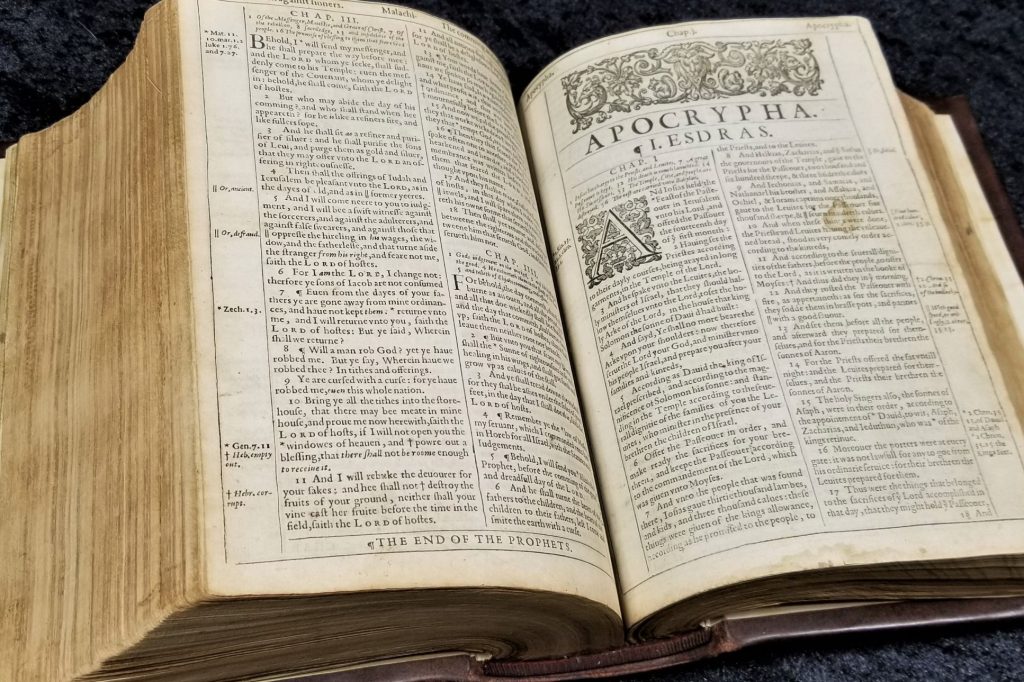
Let’s continue chronologically, from the Dead Sea Scrolls (DSS), which have no mention of Jesus. Since there are so many Christians in the world today, the majority of biblical information on the Web is produced by Christian authors. While we can say the same of Jewish authors concerning the texts from Part 2, we should play close attention to the religious or political motivation behind Christian authors about the canon of the Bible. For example, this lecture about “The Dead Sea Scrolls and the Canon and Text of the Bible” is highly factual and a very good overview of how the Bible came to be, but at the end, the author says,
How do we know that the books that we have in the Bible are the ones that ought to be there? Because we also have an infallible magisterium that we can trust is guided by the Holy Spirit, the general councils, the Pope (under the proper conditions), etc.
Dr. John Bergsma, Catholic Productions
So his Bible is the Catholic one (73 books, as suggested by Athanasius in 367 C.E.). For the faithful, trust in their denomination’s leadership is good enough!
Very few New Testament manuscripts have survived from before the 4th century, so let’s focus on the mostly-complete Bible manuscript known as the Codex Sinaiticus, written in Greek ca. 325-360 C.E. Its provenance is unknown, but the earliest historical records of the text come from the 1840s-1860s by German biblical scholar Constantin von Tischendorf, at Saint Catherine’s Monastery in Egypt.
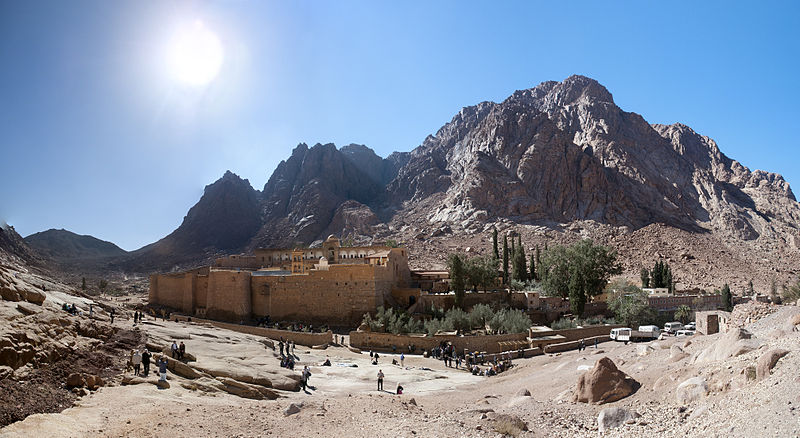
While I have not listed “extra-canonical” books in my spreadsheet, I find it interesting that the Codex Sinaiticus contains the Epistle of Barnabas and The Shepherd of Hermas. These are two examples of eventually-rejected books for the New Testament before various denominations finalized their canons. Like most Christian Bibles until the 19th century, this codex contains the intertestamental books of the Apocrypha. See more details and the aforementioned (Part 2) fully-scanned text at CodexSinaiticus.org.
I briefly touched on the Apocrypha in Part 2. In addition to these intertestamental Jewish writings, Christians had their own writings that were disputed as to whether or not they should be in a New Testament. The plan to add books based on Jesus’ teachings was developed into the 4th century C.E. under the idea of a “new covenant” mentioned in Jeremiah 31:31, and the “accepted” books came to be known as the New Testament. You can read many of the non-canonical (or “rejected”) books at EarlyChristianWritings.com.
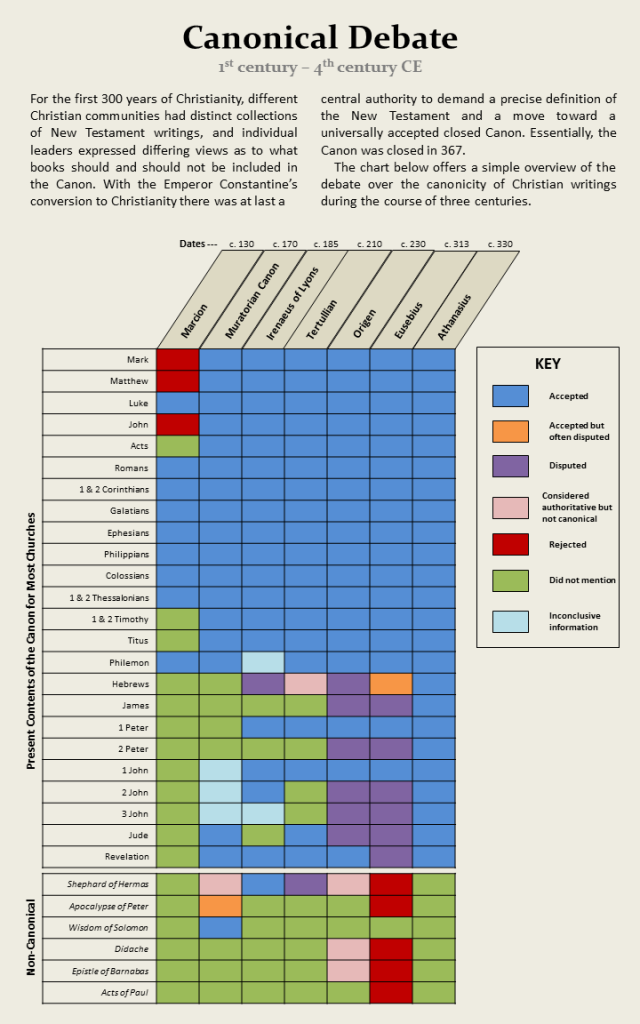
There are thousands of extant manuscripts of the Bible or portions of it, from the 4th century onward. It’s quite a scholarly—and often beautiful—journey to sift through them. While information about Western Christianity (e.g. Roman Catholicism and Protestantism) is plentiful in English, it’s a challenge to find details about Eastern Christianity (e.g. Eastern Orthodox and Ethiopian Orthodox). For example, it would be great to know more about the development of the Ethiopian Bible in Ge’ez. It is possible that the Bible in the Ge’ez language could have its roots in the 5th century, making it a valuable source for textual critics. There have been some attempts to translate the books unique to their canon (Josippon, Sinodos, and others listed with an “E” on the Canon column of my spreadsheet) but I haven’t been able to find all of them.
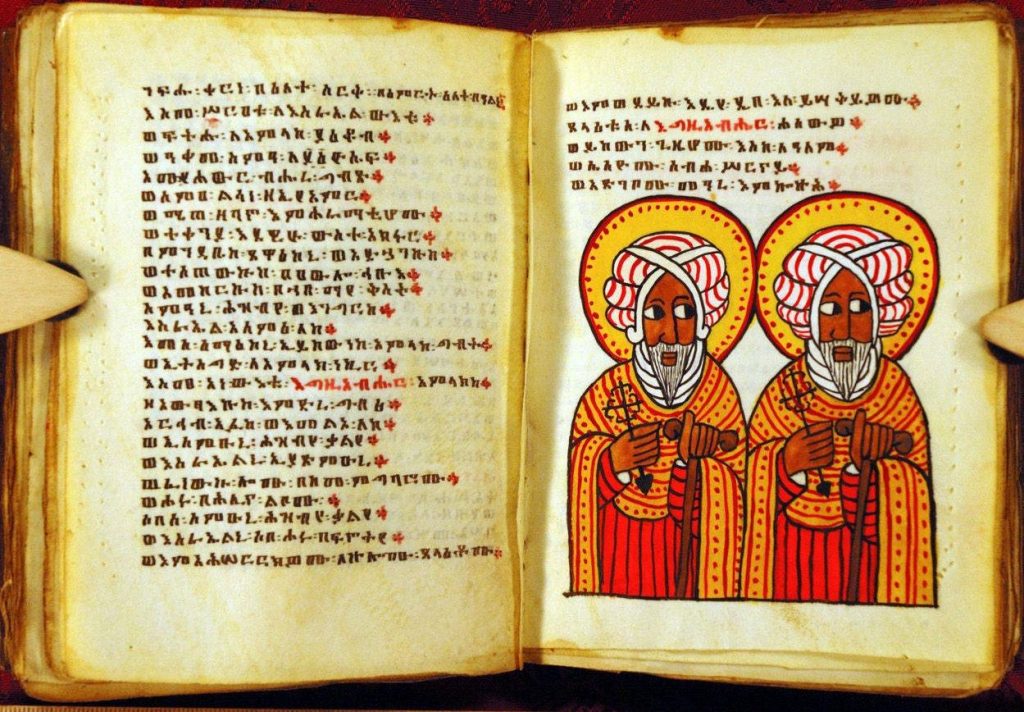
I was able to find a copy at my library of Lamsa’s English translation of the Peshitta (a Syriac Aramaic version of the Bible, although it appears that Lamsa did not translate the Apocrypha of the Peshitta). There are Peshitta manuscripts from the 5th century and some interesting arguments about Syriac being the best language for biblical study since it is a sister language to Hebrew and the Aramaic spoken by Jesus and his followers. Idioms come across more clearly in the Peshitta than they do from the Greek LXX. And some words that have more than one meaning may have been incorrectly translated, such as the Syriac “gamla” in Matthew 19:24, which can mean “camel” or “rope.” Perhaps it’s a better analogy this way: It is easier for a rope to go through the eye of a needle, than for a rich man to enter into the kingdom of God.
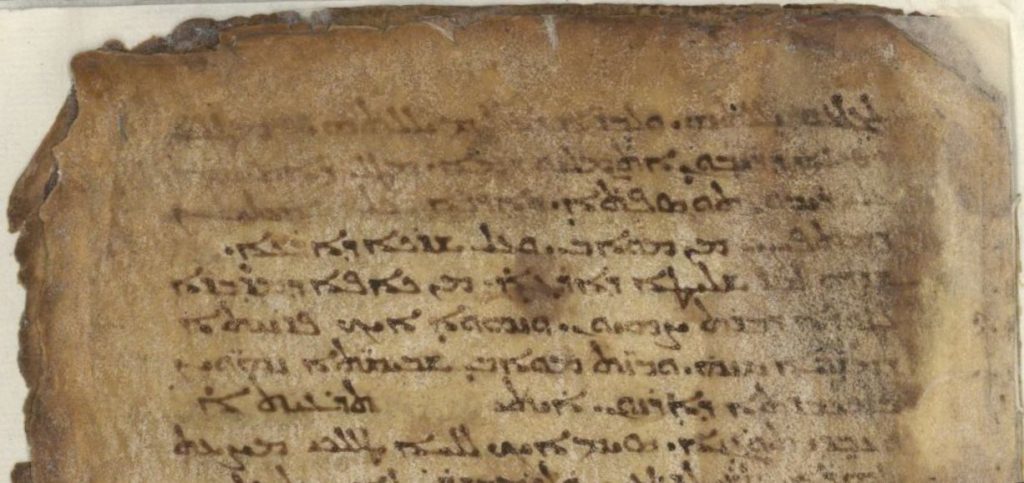
Let’s move ahead to the Protestant Reformation in the 16th century. There were interesting developments of the Bible in Latin and Greek that we’re skipping over, but none were as revolutionary as the invention of the printing press and Martin Luther’s break from the Catholic Church. This break, called the Reformation, drastically changed the way Christians regard the origin, inspiration, and truth of the Bible.
In 1455, Johannes Gutenberg made nearly 200 copies of the Bible (the Latin Vulgate), in Mainz, Germany. This was the first major work of his new printing press. The printing press fueled the Renaissance and the scientific revolution and by 1534, the Luther Bible was on shelves. This was not the first translation into a vernacular language, but it was the most successful, along with Martin Luther’s personal influence on the Western Church and literacy in general.
As for the contents of the Luther Bible, he questioned the authority of several books, such as Esther and Hebrews, and while he included the Apocrypha, it was labeled “These Books Are Not Held Equal to the Scriptures, but Are Useful and Good to Read.” You can see from the Canonical Debate chart above that Luther was not the only one to question the book of Hebrews, among others. Incidentally, the biblical chapter and verse numbering system was created later in the 16th century, which is why you don’t see them in the Luther Bible.

Like the Luther Bible, the 1611 King James Version (KJV) in English was not the first to be translated into the vernacular, but it has remained the most popular. Alongside Shakespeare’s plays (developed around the same time as the KJV), it had a huge impact on the style and standardization of the English language. The KJV originally contained the Apocrypha, but differed slightly from the approved Catholic Bible at the time (the Sixto-Clementine Vulgate wasn’t officially replaced until 1979). While modern English Bibles like the New International Version (NIV) have used the latest research from the DSS and other manuscripts, the chapters and verses of the KJV (without the Apocrypha) have remained the primary canon for Protestant Christians.
To bring this 3-part series to a close, here is my one-sentence answer to “What is the Bible?” The collection of books that a Jewish or Christian community determines to be part of their canon. What (version of) books are in that canon is determined by that particular community’s values (usually political and spiritual).
On a personal note, I mentioned in Part 1 that I had “changed my mind about Christianity.” I have found more value in scientific evidence over spiritual guidance. I have read the entire NIV Bible, and that was actually the start of my disbelief. What appears holy to many now appears abhorrent to me. There are plenty of inspirational passages in the Bible, and Jesus was certainly charismatic and special, but the Bible as a whole is no longer something I would consider to be inspired by God. See ExChristian.net or The Skeptics Annotated Bible for hundreds of reasons why.
As a scientifically-minded person, I prefer forming my beliefs from evidence, not from a feeling or allegiance to religious tradition. In the end, I can’t discount anyone’s personal experiences with religion, but I take comfort in the scientific method (based on universal principles). It allows us to admit mistakes, accept the experience of others, and move forward by building upon a foundation of knowledge.
* When the King James Bible was first being printed in 1611, two of the early editions were known as the “He” and “She” Bibles, due to the letter “s” being prepended to “he” in Ruth 3:15. The correct pronoun is debated worldwide, to this day.